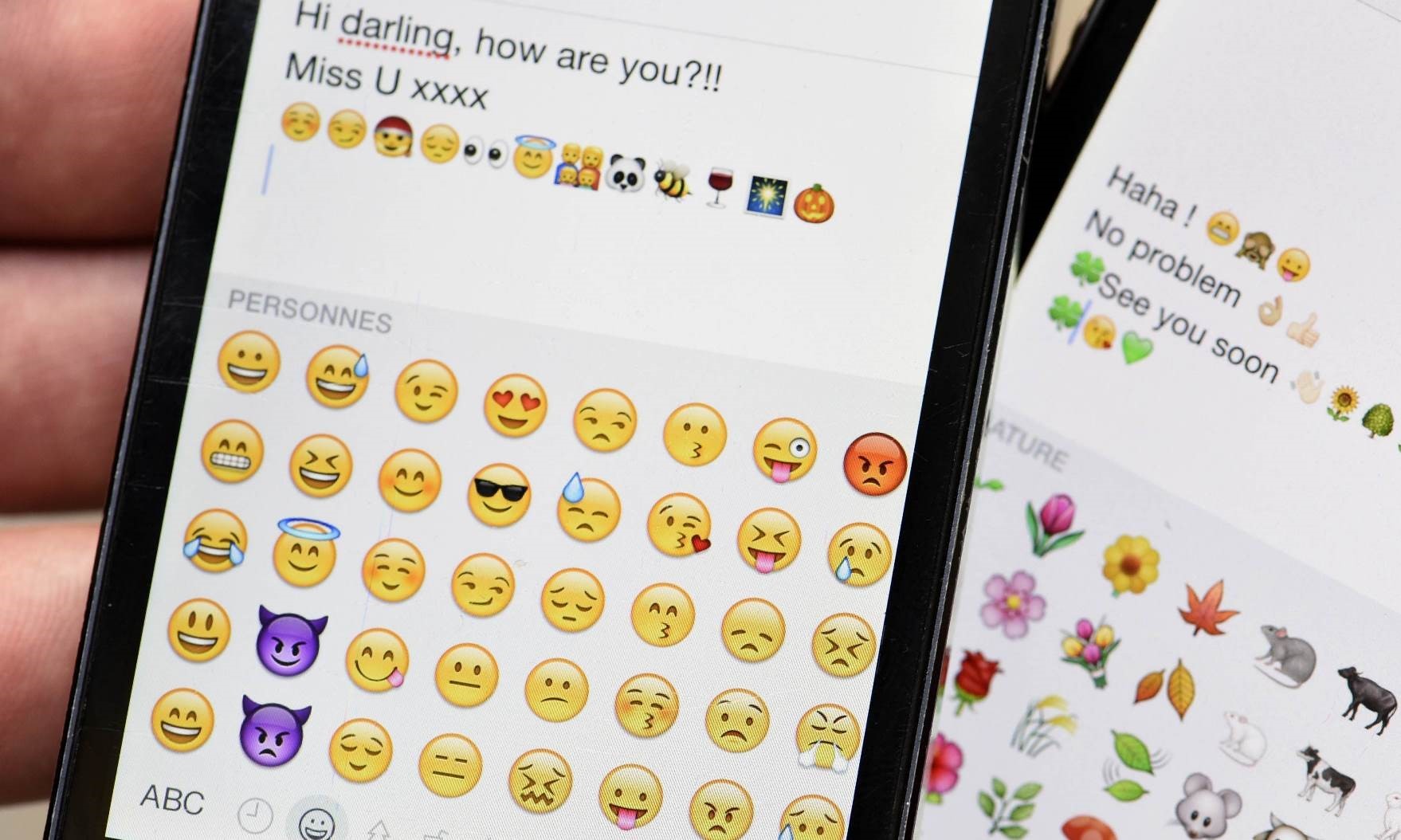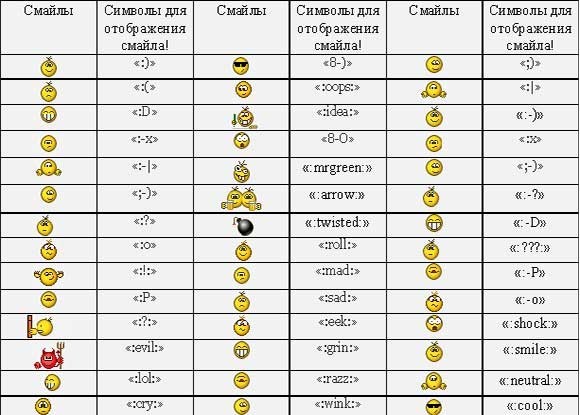The evolution of mobile slang: when will graphics replace words?

15 years ago, there was no “VKontakte” and Facebook, the phones were push-button, communication was expensive, and the mobile Internet was not unlimited. Then, in the era of ICQ and SMS, abbreviations like “IMHO” and “LOL” became popular. By 2015, the word "lol" changed beyond recognition, turned into an emoji "laughter through tears" and in this form became the word of the year according to the Oxford dictionary. This is part of a global process based on the development of mobile technologies. Should we be afraid that, over time, there will be no place for ordinary words in mobile communication?
As practice shows, a letter sent by mail is stylistically very different from a face-to-face conversation. The faster the messaging takes place, the more the conversation style becomes.
Emotions are hard to convey in writing. The author of the letter 100 years ago did not have the opportunity to mark a joke with a smile, and he had to spend a lot of time trying to find the right and unequivocal words. When communicating in messengers, it is considered good form to respond to messages instantly (and this tendency appeared in ICQ, many years ago). The language was simplified, approached the spoken language, and the need arose for symbols to indicate emotions.
')

Stage 1: LOL
Communication via SMS implied additional restrictions. The number of characters is strictly limited, and you must pay for each message. Keck, lol, lulz - all this is much shorter than the phrase "I find it very funny." Slang is especially relevant when you need to type a message with one finger under a desk, so it quickly spread among young people. It was often possible to find large tables on the network — original dictionaries of abbreviations.

Stage 2:: D
Earlier, emoticons appeared - in their original form. It is believed that for the first time this idea was voiced by Vladimir Nabokov in 1969 during an interview: “I often come to mind that I need to come up with some kind of typographic sign indicating a smile, some squiggle or fallen back bracket I could accompany to your question. "
His advice was followed, and in 1982 someone named Scott Fulman suggested using a sequence :). Over time, they invented emoticons capable of transmitting other emotions, but their possibilities were still limited to standard characters on the keyboard. A step on the way to Emoji was painted emoticons that can replace their predecessors with punctuation marks and slang abbreviations.

They were transmitted using encoding and displayed as a picture only if the addressee had the corresponding set of smiles installed. A user who did not update ICQ could get its code instead of a face.
Stage 3: Emoji
Over time, the emoticons transformed into Emoji (the first of them appeared in Japan back in the 80s). In 2007, Google added several emoji to the Gmail service, and in 2010 they became available on iOS and Android.
The Emoji set is updated with each new platform update; more and more words can be replaced with pictures. According to Swyft Media, US users send an average of 96 emojis per day. In some cases, remote communication between several subscribers can only be based on the exchange of emoji. Even the Bible was partially rewritten using 80 standard characters.
Emoji is used not only in private conversations, but also in business and mass promotions. The World Wildlife Fund tweeted a flash mob under the hashtag #EndangeredEmoji. Users were asked to choose one of the images of endangered animals, post under the hashtag and translate 10 eurocents in favor of WWF.


In 2015, we launched an advertising campaign, the heroes of which on the banners were people with emoji instead of the head. In its support, our press office issued a press release consisting only of emoji.
Emoji has its drawbacks, the main one of which is the possible ambiguity. Not always two people, looking at the same picture, understand it equally. The Unicode Emoji Standardization Consortium, after a brief study of user behavior, suggested making a number of changes to the smilies. It turned out that people perceive some pictures not as the authors intended. Users of different countries see the same emoji differently. So the Unicode Consortium reported that the cat, pressing his paws to his cheeks in iOS, was just tired, and did not scream in horror.

Stage 4: Stickers and Gifs
The further development of symbolic communication led to the appearance of stickers, the number of which increased many times with the advent of Telegram. Large colorful images of some platforms even managed to monetize.

Gifs have also found their audience. Many messengers already support the search for suitable gifs by tags, there are gif-keyboards and hourly-updated gifs tops. The journalist "Posters" even set up an experiment - during the week he conducted personal and business correspondence only with pictures and animated gifs. As a result, it turned out that working correspondence with pictures is not only possible, but also uplifting the interlocutor. He readily begins to send stickers and gifs in response. However, the article “ What is it like - a week to communicate only with gifs and emoji ” as a result was written in the very oldsculist style.
With all the advantages, Emoji has never succeeded in repeating Emoji success. One of the reasons may be that they are heavy (in the literal sense of the word) artillery. Unlike emoji, which are transmitted using encoding, a sticker is a picture transmitted by a link or file. In the conditions of unlimited Internet it does not matter, but it can be important when traveling. Recently, we wrote that we launched the free messaging service in instant messengers in international roaming. So: emoji are text and are transmitted for free, but stickers are not.
Stage 5: Disappearing Text -?
Mobile technology continues to evolve. Phones are already trying to learn to distinguish the force of pressing a finger, to understand the emotional state of the user, measuring the speed of SMS input, the frequency of using the Del key and the force of shaking the device. Based on all these data, the smartphone “decides”, happy, surprised, afraid, angry, or sad about its owner. Anger, fear, expectation, surprise, joy, sadness, trust and other emotions can be identified faster than the person himself is aware of. And with the same speed to transfer to the interlocutor.
Is it possible that the very need to write something and say to another person will die away in the near future? To identify positive and negative emotions, it’s not necessary to talk about them. But in order to convey certain information, it is not enough to understand the emotional color and choose the appropriate picture.
A person perceives nouns not as a set of symbols, but as a visual image. Here is the word for you: the table. For you, these are not the letters “s”, “t”, “o” and “l”, but a flat object standing on four legs. However, other parts of speech in our thinking are perceived differently: “Come and take an apple from the table” - here there are not only visual nouns (an apple, a table), but also spatial operators (come and take) “controlling” visual images. We perceive them, but we don’t imagine them as concrete objects - we don’t draw a picture in our head, how we approach the table and take an apple from it. The subconscious mind perceives the operators and binds them to the images, so at this stage of development we cannot fully switch to the graphic transfer of information.
Meanwhile, talk of recognizing Emoji in a new international language is already underway. And we remind that, whatever the form of communication, the main thing is the content, and we urge you to communicate as much as possible and use all possible means to do this.
Source: https://habr.com/ru/post/311766/
All Articles